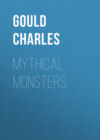Читать книгу: «Mythical Monsters», страница 19
Что-то пошло не так, попробуйте зайти позже
Покупайте книги и получайте бонусы в Литрес, Читай-городе и Буквоеде.
Участвовать в бонусной программеЖанры и теги
Возрастное ограничение:
12+Дата выхода на Литрес:
28 сентября 2017Объем:
501 стр. 102 иллюстрацииПравообладатель:
Public Domain










